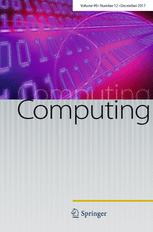Andrea Burattin
Associate Professor
Technical University of Denmark
Time and activity sequence prediction of business process instances
M. Polato, A. Sperduti, A. Burattin, M. de Leoni
Abstract

The ability to know in advance the trend of running process instances, with respect to different features, such as the expected completion time, would allow business managers to timely counteract to undesired situations, in order to prevent losses. Therefore, the ability to accurately predict future features of running business process instances would be a very helpful aid when managing processes, especially under service level agreement constraints. However, making such accurate forecasts is not easy: many factors may influence the predicted features. Many approaches have been proposed to cope with this problem but, generally, they assume that the underlying process is stationary. However, in real cases this assumption is not always true. In this work we present new methods for predicting the remaining time of running cases. In particular we propose a method, assuming process stationarity, which achieves state-of-the-art performances and two other methods which are able to make predictions even with non-stationary processes. We also describe an approach able to predict the full sequence of activities that a running case is going to take. All these methods are extensively evaluated on different real case studies.
Paper Information and Files
In Computing, vol. 100 (2018), issue 9, pp. 1005-1031.
- DOI: 10.1007/s00607-018-0593-x
- BibTeX: see at DBLP
- Download text This is a post-peer-review, pre-copyedit version of an article published in Springer Computing. The final authenticated version is available online at: http://dx.doi.org/10.1007/s00607-018-0593-x.
- Paper via ShareIt
General rights
Copyright and moral rights for the publications made accessible in the public website are retained by the authors and/or other copyright owners and it is a condition of accessing publications that users recognise and abide by the legal requirements associated with these rights.
- Users may download and print one copy of any publication from the website for the purpose of private study or research.
- You may not further distribute the material or use it for any profit-making activity or commercial gain.
If you believe that this document breaches copyright please contact us providing details, and we will remove access to the work immediately and investigate your claim.